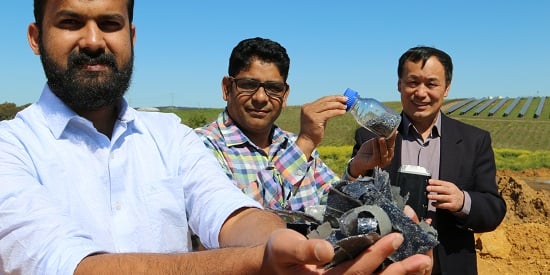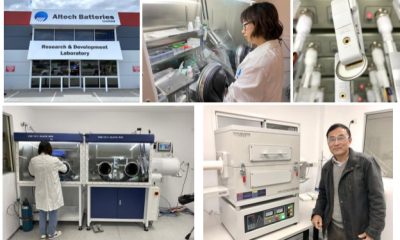Energy & Critical Metals
Researchers extract silicon from old solar panels to build better batteries
Researchers have extracted silicon from old solar panels and converted it into a nano material used to build better batteries.
The post Researchers extract…

Scientists from Australia’s Deakin University’s Institute for Frontier Materials (IFM) have successfully tested a new process that can extract silicon from old solar panels, and convert it into a nano material that can be used to build better batteries.
This converted nano-silicon is then mixed with graphite to develop a new type of battery anode shown to increase lithium-ion battery capacity by a factor of 10.
More than 100,000 tonnes of end-of-life solar panels will enter Australia’s waste stream by 2035 according to the research team. For this reason, lead researcher Dr Md Mokhlesur Rahman believes it’s critical to develop a successful recycling programme to divert old panels away from landfill and harvest and repurpose the panels’ most valuable components.

“Solar panel cells are fabricated using high-value silicon, but this material cannot be re-used without purification, as it becomes highly contaminated over the 25 to 30 years of the panel’s life,” Dr Rahman said.
“We have developed a process that returns silicon collected from used cells to greater than 99 per cent purity, within a day and without the need for dangerous chemicals. This thermal and chemical process is far greener, cheaper, and more efficient than any other technique currently on the market.”
The Deakin process then takes this regular-sized purified silicon and reduces its size to nanoscale using a special ball-milling process. Again, without the need for toxic chemicals.
Have you read?
Rooftop solar plant powers Toyota industrial facility in Paris
Brazil island to host Iberdrola’s first floating solar PV plant
“We are using that nano-silicon to develop low-cost battery materials that will help deliver the higher performing, longer lasting, affordable battery technology critically needed to drive Australia’s clean energy transition,” Dr Rahman said.
The current market price for nano-silicon is about $45,000 per kilo, compared to about $650 for regular silicon, and it is in even higher demand. Not just for new battery materials, but also for use in the development of nano-fertilisers, innovative new methods for carbon capture, and on-demand hydrogen gas generation.
By recycling solar panels, the IFM team has found a way to make this seriously expensive material more accessible. They estimate their technique could generate US$15 billion in material recovery if extrapolated to the 78 million tonnes of solar panel waste expected to be generated globally by 2050.
So far, the work has been supported with funding from the ARC and Sustainability Victoria, and the team is now talking with industry about plans to scale-up their process.
The post Researchers extract silicon from old solar panels to build better batteries appeared first on Power Engineering International.

Uranium Exploration Company Announces Additional Staking in the Athabasca Basin
Source: Streetwise Reports 12/22/2023
Skyharbour Resources Ltd. announced an update from its Canada-based Falcon Project along with additional…
Tesla Launches New Mega Factory Project In Shanghai, Designed To Manufacture 10,000 Megapacks Per Year
Tesla Launches New Mega Factory Project In Shanghai, Designed To Manufacture 10,000 Megapacks Per Year
Tesla has launched a new mega factory…
Giving thanks and taking stock after “a remarkable year”
An end-of-year thank you to our readers, industry colleagues and advertisers before Electric Autonomy breaks from publishing until Jan. 2
The post Giving…














